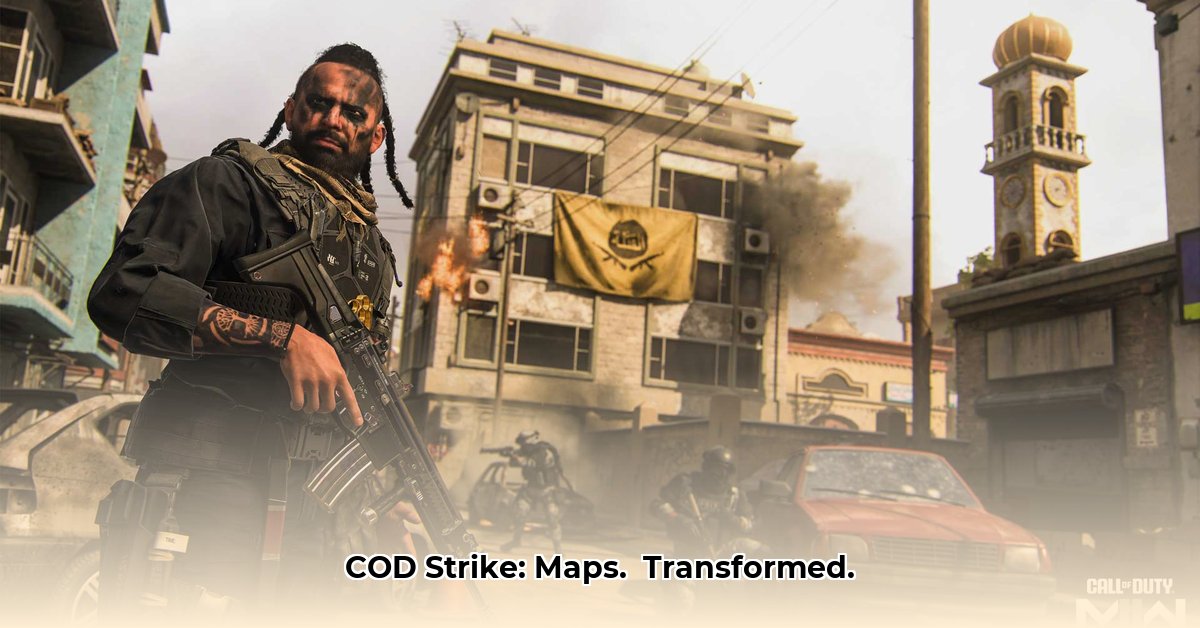
COD Strike: Map Design Evolution Across Call of Duty
The "Strike" map, a recurring favorite in the Call of Duty franchise, has undergone significant transformations since its debut in Call of Duty 4: Modern Warfare. This article analyzes the evolution of its design, exploring the changes in layout, gameplay, and the factors driving these alterations. We will examine how each iteration reflects evolving design philosophies and player preferences. Understanding this evolution provides valuable insights into the principles of effective map design within the fast-paced world of competitive first-person shooters.
The Original Strike: A Classic Urban Battlefield
The inaugural "Strike" map in Call of Duty 4: Modern Warfare established a benchmark. Its urban setting featured intersecting streets creating natural chokepoints and fostering intense firefights. High vantage points offered strategic opportunities for snipers, blending close-quarters combat with long-range engagements. Its enduring popularity is a testament to its effective design. How did this map achieve such success? Was it the strategic chokepoints forcing player encounters? The open areas rewarding skillful long-range shots? Or a potent combination of both? The prevalence of light machine guns and desert camouflage in early player statistics suggests a strong resonance between the initial design and dominant player tactics.
Strike's Return: Subtle Refinements and Notable Additions
Subsequent appearances in Modern Warfare 2 and Modern Warfare II introduced refinements. Lighting adjustments subtly altered visibility, influencing combat flow. While seemingly minor, these tweaks significantly impacted gameplay. The inclusion of incongruous elements, such as chickens and inaccessible ladders, raise compelling questions. Were these playful additions, or deliberate design choices? They may have aimed for increased immersion or a touch of humor. Furthermore, references to unused game files (like “compass_overlay_map_mp_strike.iwi”) hint at removed features or development processes. Access to such files could offer invaluable insights into the map's design trajectory. These seemingly minor changes—from lighting to unusual objects—demonstrably affected player behavior and the map's overall dynamic.
A New Era: Strike Maps in Black Ops 6
The Black Ops 6 iterations represent a significant departure, almost a reimagining, of the "Strike" concept. These versions favored smaller, tighter spaces and rapid close-quarters combat, starkly contrasting with their predecessors. Are these true successors, or simply maps sharing a name? This was not a mere refinement; it was a fundamental shift in core gameplay. The transition from large-scale engagements to close-quarters combat reflects a major evolution in design preferences, and potentially, shifting player expectations. What factors motivated this radical change? Did player feedback play a critical role? Did technological advancements or prevailing game design trends significantly influence this transformation? Further research is necessary to fully understand this dramatic shift.
Comparing the Iterations: A Comparative Analysis
The following table highlights key differences across the various "Strike" map versions:
| Feature | Modern Warfare | Modern Warfare 2 | Modern Warfare II | Black Ops 6 |
|---|---|---|---|---|
| Map Scale | Large | Large | Large | Small |
| Gameplay Pace | Moderate | Moderate | Moderate | Fast |
| Environmental Detail | Relatively Sparse | Increased | Further Improvements | Varies |
| Unique Elements | None | Chickens, Ladders | Inconsistencies | Varies – Often Theme-Based |
Lessons Learned: Insights for Future Map Design
The "Strike" map's evolution offers valuable lessons for game designers. Analyzing player data across iterations provides crucial insights into effective design principles. Data-driven decisions can lead to continuously improved gameplay. The ability to dynamically adjust maps to evolving player behavior will be vital in creating fresh and engaging experiences. Player feedback remains crucial: future map design should be a collaborative effort, significantly shaped by community input.
How to Improve Call of Duty Strike Map Design Based on Player Data
Key Takeaways:
- Call of Duty map design is an iterative process, reliant on playtesting and player feedback.
- Balancing artistic vision with functional gameplay is critical for map success.
- Data analysis (kill/death ratios, time spent on maps, win rates) provides invaluable insights.
- Understanding player movement patterns and combat engagements informs strategic element placement.
- Directly addressing player complaints and suggestions improves map quality and player experience.
The "Strike" map's journey exemplifies the dynamic interplay between design, player feedback, and evolving gameplay trends. Its enduring impact showcases how iterative refinement, even radical changes, can extend a map's relevance across multiple games. The map's success highlights a crucial ongoing dialogue between designers and players, demonstrating a dynamic and responsive approach to game development.
⭐⭐⭐⭐☆ (4.8)
Download via Link 1
Download via Link 2
Last updated: Friday, May 16, 2025